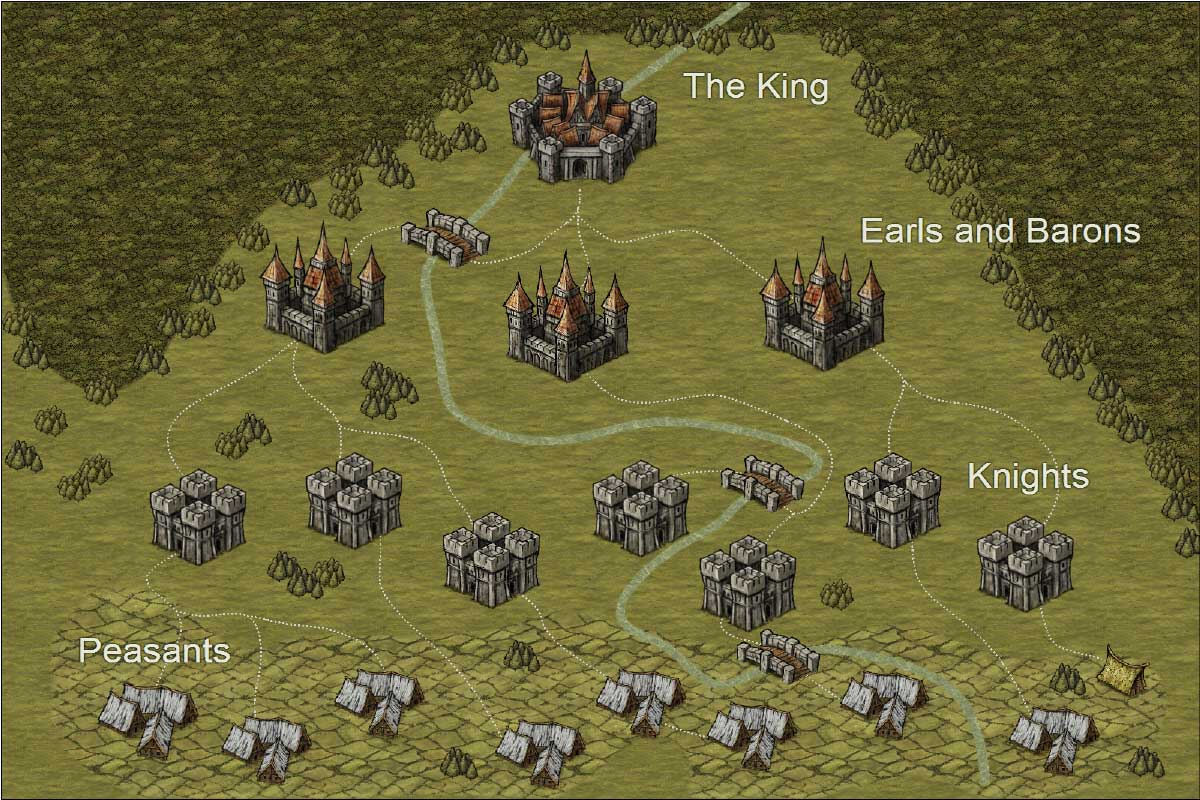


In 1087, fearing possible revolts against him, William gathered his tenants-in-chief together at Old Sarum and made them take an oath of loyalty to him. The feudal system allowed William to control land in England. This unorganized and largely retaliatory method of law evolved as the Germanic tribes became sedentary, established kingdoms, interacted with the Romans. Barons or Lords who were given land directly from the king were known as tenants-in-chief. The feudal system meant that everyone in England, apart from the king, was a tenant. feud, feudal, feudalism, feudality, feudalize, feudal system, feudatory, feu de joie, feudist, Feuerbach, Feuillant Unabridged Based on the Random House Unabridged Dictionary, © Random House, Inc. This was shown in the Peasants' Revolt in 1381. Peasants had very few rights and little power on their own, however as a collective group they had the potential to threaten the power of the king. Some peasants were freemen and they had more rights than villeins. Most peasants were villeins and they were at the bottom of the system. Peasants were the largest and lowest group in medieval society, making up over 90% of the population. The nobility became wealthy from rent raised from peasants they let farm on the land. Noblemen would also let peasants live and work on the land, in return for taxes and food. They would distribute some of their land to knights, who would raise an army to fight for the king when needed. This included the clergy, barons, and lords and ladies. The nobility were below the king in the hierarchy. To manage this, he gave large areas of land to noblemen, including the clergy, lords and barons, in return for them raising him money and an army. When he conquered England, King William took all of the land in the country. The king was at the top of society, and therefore at the top of the feudal system. The Domesday Book was produced to give William this information. He also wanted to raise money to fund an army to protect his land in case of invasion, meaning he had to find out who he could tax. This wasn’t as immediate as the other problems.
#Types of feudal kingdoms code
Imagine a world where cherry blossoms bloom once a year, the Jedi code is mixed with the Bushido code, arrows fly alongside phaser blasts and horses can be seen galloping below spaceships. To raise taxes and run the country effectively, William needed to know who owned land and how much money they had. A blending of two things I love, Japanese history and Starwars. Knowing little about England and its people Motte-and-bailey castles were built all over the country to protect his supporters.Ĥ.


My father was a biochemist at the chemical company Union Carbide when I was a child in New Jersey. William needed to quickly find a way to protect his supporters and soldiers in England. I grew up in what some now deem the age of plastic.Though it’s not the only modern material invention, plastic has had the most unforeseen consequences. (See Analyzing Key Concepts on next page.) Social Classes Are Well Defined In the feudal system, status determined a per- sons prestige and power. His division of land ownership, the feudal system, solved this.ģ. If large landowners opposed him then they could raise money and possibly an army to rebel against him. William needed to make sure that the people who owned land were supportive of his rule. The Harrying of the North dealt with the northern opposition. Rebellions in the North could threaten his rule and needed to be dealt with. There was support in the north of England for Edgar the Atheling to become king. Norwegian Nynorsk Etymology ĭreng m ( definite singular drengen, indefinite plural drengar or drenger, definite plural drengane or drengene)įrom Proto-West Germanic *drangī, from Proto-Germanic *drangijaz.All four problems were important for different reasons “ dreng, drenǧ, n.”, in MED Online, Ann Arbor, Mich.: University of Michigan, 2007.A follower of a lord a member of a host.( poetic ) A warrior or soldier a person who fights.( from Old Norse drengr ) IPA ( key): /drɛnɡ/, /drinɡ/.Some forms are influenced by Old Norse drengr. Inherited from Old English drenġ, from Proto-West Germanic *drangī, from Proto-Germanic *drangijaz.
#Types of feudal kingdoms free


 0 kommentar(er)
0 kommentar(er)
